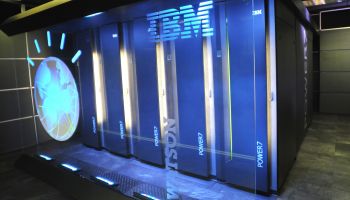

IBM has announced three major partnerships as part of a big push into the Internet of Things (IoT) arena.
First up is its work with Thomas Jefferson University Hospitals to provide three of the healthcare organisations facilities with access to IBM Watson IoT Platform in order to create hospital rooms designed to tap into Big Blue’s cognitive computing tech
The aims is to put speakers into hospital rooms that can be connected to lights, window blinds and hospital information which patients can command through voice control. The natural language comprehension capabilities of Watson means they will also be able to ask question about their physicians and the hospital facilities and Watson will be able to answer them based on the data its IoT system has access to.
The idea behind the IoT strategy is to make life more comfortable and less stressful for patients yet without requiring a nurse to be constantly on hand to help them out with basic requests. In practical terms, this means patients can ask the Watson-powered speaker to remind them when they have a visit from a relative or to stand up every few hours.
“Our goal is to be the world’s leading manufacturer of cognitive solutions which keep the world moving,” said Prof. Dr.-Ing. Peter Gutzmer, Deputy CEO and CTO at Schaeffler.
“We are entering an age where parts can monitor and evaluate their own performance and even order their own replacement when necessary. Schaeffler is a world leader in product development and manufacturing, IBM in hybrid cloud and cognitive computing; through this partnership we are ushering the new industrial era.”
Initially the partnership will focus on using Watson with Schaeffler to produce cognitive IoT systems for use within the wind and energy sector, the monitoring and optimisations of trains, connected vehicles and the analysis of data transmitted in connected equipment operation centres and transmitted to Schaeffler’s cloud platform.
The drone will use the Watson IoT Platform to monitor a variety of situations by making use of its visual recognition application programming interfaces (APIs) and the drone’s cameras to capture images and analyse them in near-real time and provide that information back to a controller or engineer on the ground.
As the Watson IoT Platform leans over time, it can get better at spotting things like frayed cables and damaged equipment in order to speed up inspections. The Watson equipped drones will start with targeting the telecoms industry but has the potential to spread to other sectors, such as crowd safety and aviation inspection.
“By pairing the unmatched perspective of drones with the proven power of Watson IoT solutions, companies can gain actionable insights into anything, anywhere and use this knowledge to help drive important business decisions,” said Jeremy Wigmore, CEO of Aerialtronics.
IBM is not pulling any punches with getting Watson into as many areas as possible, from the University of Aberdeen to helping Wimbledon 2016’s social channel.
Think you know Big Blue? Take our IBM quiz here!
Expansion among chaos. Amazon considering warehouse expansion in US, and already cancelled some Chinese orders
Loose lips sink...your job. Federal communications reportedly being spied upon by Musk's DOGE, using AI…
Apple's share price plummets over 23 percent in recent days, promoting Microsoft as world's most…
Global markets continue to plummet, as Trump tariffs go into force - including a 104…
Discover how businesses can cut through the AI hype, set realistic goals, and achieve real…
British regulator Ofcom announces first investigation under new digital safety laws, into an online suicide…